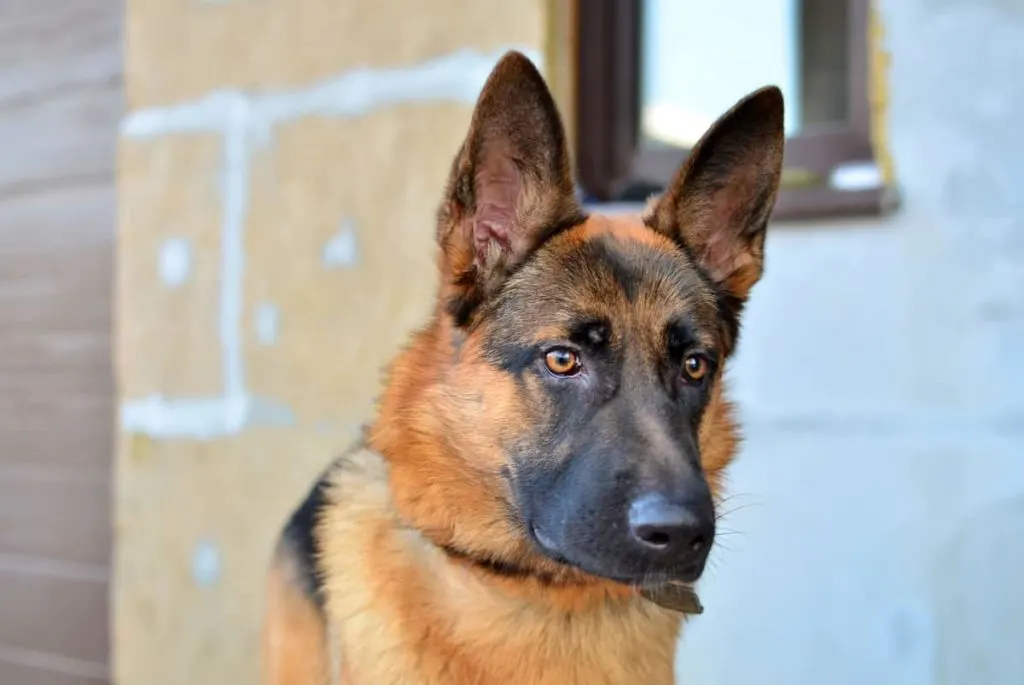
Having a guard dog in your home or on your property brings a sense of safety and security. Not only will these loyal, brave, sturdy dogs keep you, your family, and your property safe, but they come in a lovable and loyal package ready to play and cuddle with you, too.
But which breed of dogs are the best guard dogs? We’ve met with training professionals and breeders, and compiled the top five list of the best dog breeds for protection to help save you time and effort on your own search.
Read on to find out why we chose these five guard dog breeds!
Click Here to Jump to a Section
Why Do People Need Guard Dogs?
When humans add a guard dog to their lives, it’s usually for a good reason. The most common reasons are to secure expensive property and to keep their families safe. However, people choose to get a protection dog for many other reasons.
- To alert to possible danger, intruders, or unusual activity
- To protect property such as warehouses, junkyards, and other large spaces
- To protect valuables such as expensive or rare cars, jewelry, or collectibles
- To guard a home and family
- To keep watch over property, people, and valuables when an owner is away, or even when the owner is present
- To ease anxiety or fear that something bad might happen
- As a deterrent to any would-be thieves
The bottom line is that having a big, protective dog nearby makes many people feel safe and confident in their homes, businesses, or out traveling. That peace of mind—knowing your dog has your back—is enough reason for many people.
However, it’s best to know the details, understand the risks, and accept the responsibility of keeping a guard dog on the premises.
What Makes a Good Guard Dog?
First and foremost, a good guard dog has gone through rigorous training. When you’re talking about giving a dog such an important job, that dog needs to know what’s expected of it.
The best guard dogs will have been trained by a professional or an experienced owner and handler. A good guard dog is an obedient dog above all else. It should know the basic commands and perform them perfectly every time.
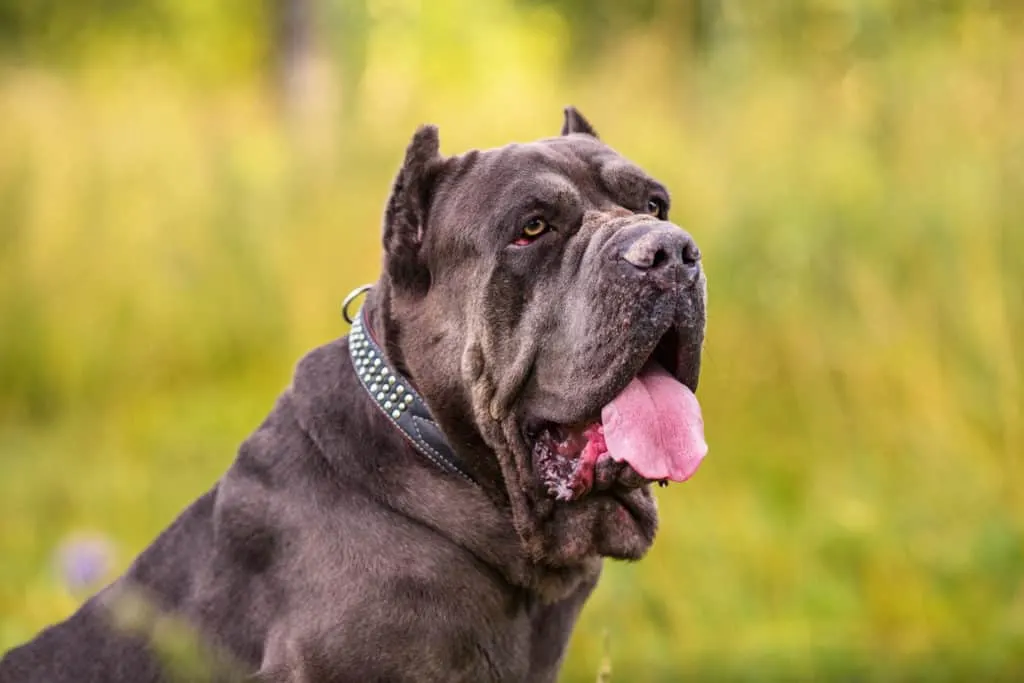
After basic training, a potential guard dog will need to be taught a lot of new things. They will need to know when it’s okay to alert or bark. If you don’t teach this skill, you’ll end up with a dog that barks at everyone and everything that comes into view or even that it can hear down the street.
Guard dogs need to know how to handle intruders without causing grievous harm. While we can’t expect dogs to truly hold back their drive to protect, it is possible to teach them a pattern to their behaviors.
This includes teaching your guard dog to warn with a growl, defensive body posture, and slow-advancing movements. A dog that doesn’t warn, but simple charges and attacks, is a dangerous dog.
Can Any Aggressive Dog Be Used as a Guard Dog?
Having an aggressive, uncontrolled dog is never a good idea. These types of dogs do not make good guard dogs; they are simply a liability and maybe even a tragedy waiting to happen. Without proper training, dogs can do a lot of damage to people and property.
Traits of a Good Guard Dog
While guard dog breeds may vary widely, the traits of a great protection dog do not. The list is pretty straight forward.
- Loyal
- Courageous
- Alert
- Obedient
- Intelligent
- Well socialized
How Long Does It Take to Train a Guard Dog?
This will depend largely on the individual dog. All dogs have different temperaments and personalities. They all train at different speeds, too.
Yet, there is still a general assumption that a guard dog can begin to train at around 6 months of age. Obviously, you’d want to be sure basic obedience training has been completed first.
After that, you’ll likely spend the next year to year and a half training your dog to guard your property or home. It is a big investment of time and energy. It’s definitely worth taking the time to do it right, though.
What Dog Breeds Make the Best Guard Dogs?
Just about any dog can be used for alerts or other non-physical jobs, but the best guard dogs are large, powerful, loyal, intelligent, and well-trained. You can use small dogs for alert animals, of course, but this list will focus on the larger breeds used for physical protection as well as alert abilities.
German Shepherd as a Guard Dog
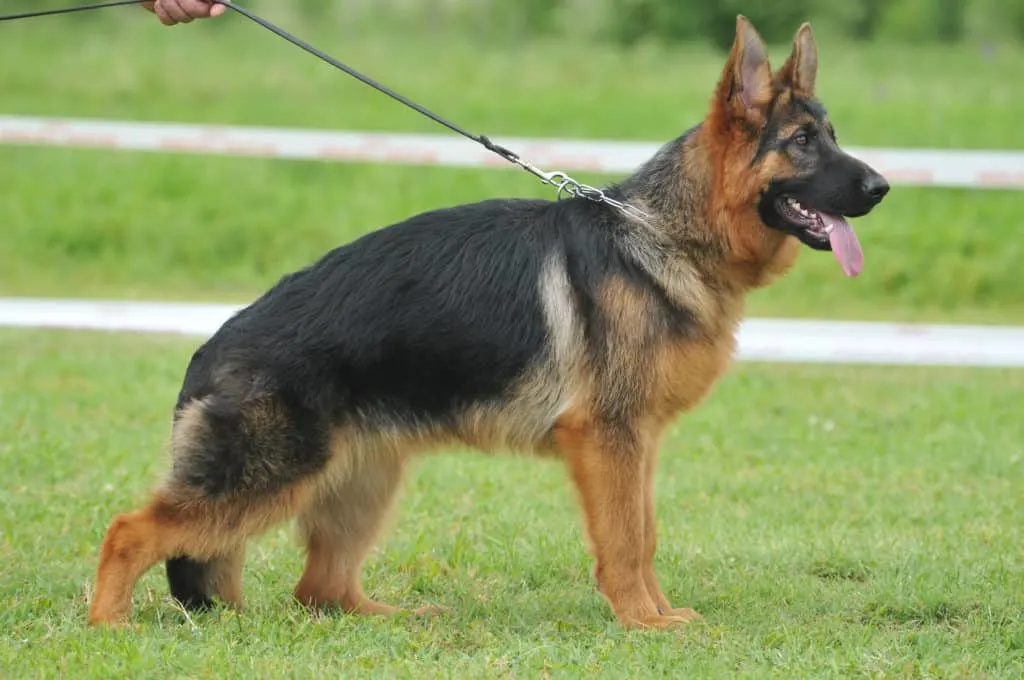
It should come as no great surprise that German Shepherds are at the top of our list of the best guard dogs. Used as police, military, and rescue dogs, GSDs are well known for their bravery, loyalty, physical strength, and resilience. As large, powerful dogs, a GSD is bred for hard work and yearns for opportunities to prove himself.
Famed dog trainer, Cesar Milan, described German Shepherds as “bold, confident, and fearless.” And we agree! It’s this kind of natural courage that will protect your family, your home, your business, or your property when trouble comes knocking. Backed by intelligence and a need to please, your GSD will stop at nothing to keep you and your property safe.
One benefit that German Shepherds have over other breeds for guarding is their natural curiosity. This, coupled with a cool demeanor lets them stop, observe, and think before they act.
When guarding a house or business, it’s important for a dog to know what danger looks like and what’s just a curious person walking by. GSDs excel and sizing up a situation before jumping in with teeth bared.
Size
German Shepherds can reach pretty impressive weights, making them excellent guard dogs. Male GSDs can weigh between 66 and 88 pounds. Females can weigh 49 to 71 pounds. No matter the gender, a GSD is a big, strong, and imposing dog. They’re not afraid to throw their weight around either.
Indoor or Outdoor
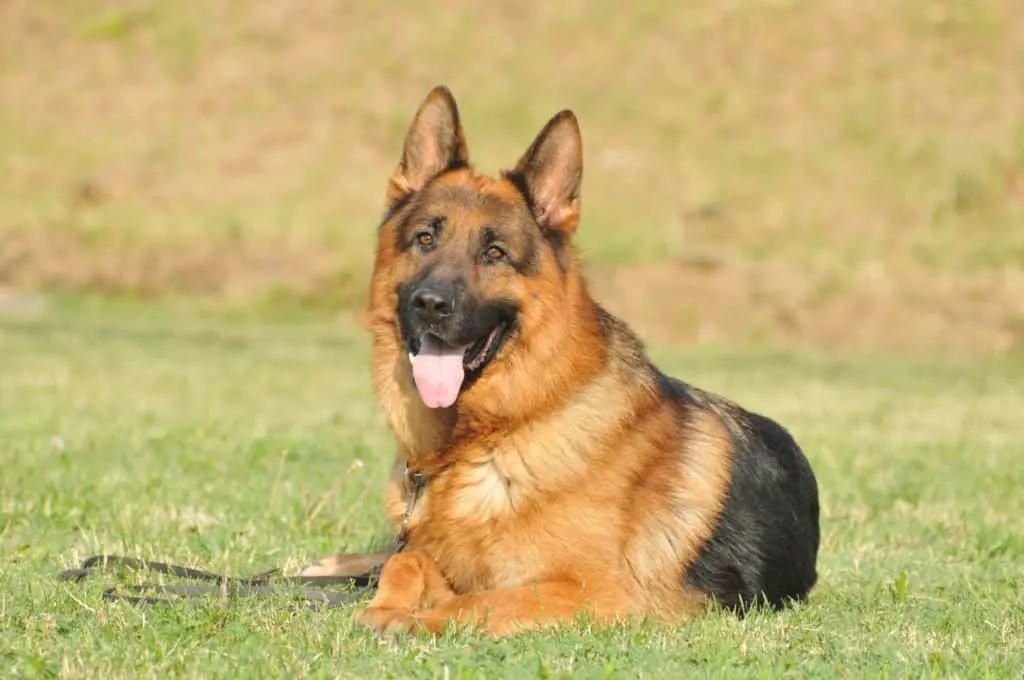
Despite their size, German Shepherds make great indoor guards as well as outdoor protectors. This is because they are adaptable and intelligent enough to know the difference between sprinting across a yard and carefully navigating through a home.
Because GSDs are also great pets, you are getting a multi-purpose dog. In fact, keeping your guard dog German Shepherd in your home, living with your family, will help teach her what she should be protecting and why.
Natural Attributes
German Shepherds have their size, strength, and intelligence going for them when considering guard dogs. But did you know that one of their defining features is a natural affinity for protecting their family? It’s true! GSDs are loyal to the core and they have a natural drive to protect what they consider theirs.
Having a natural tendency toward protection helps when it comes time to train. All training is easier when you build on the natural foundations that already exist, and this is especially true for the GSD.
Knowing that, you should be sure the puppy you choose exhibits the best traits for the breed, including the desire to protect.
A Frightening Appearance
We all know that German Shepherds are sweet, loving, and gentle giants when they’re around their humans. However, there is no denying their penetrating gaze and intimidating countenance. These dogs are big, brave, and look pretty mean on the outside.
Simply having one or two GSDs patrolling your yard or property is often enough to scare off any thieves or vandals casing the place. And if their appearance doesn’t scare them off right away, their protective stance and deep, menacing growl surely will.
Doberman Pinscher as a Guard Dog
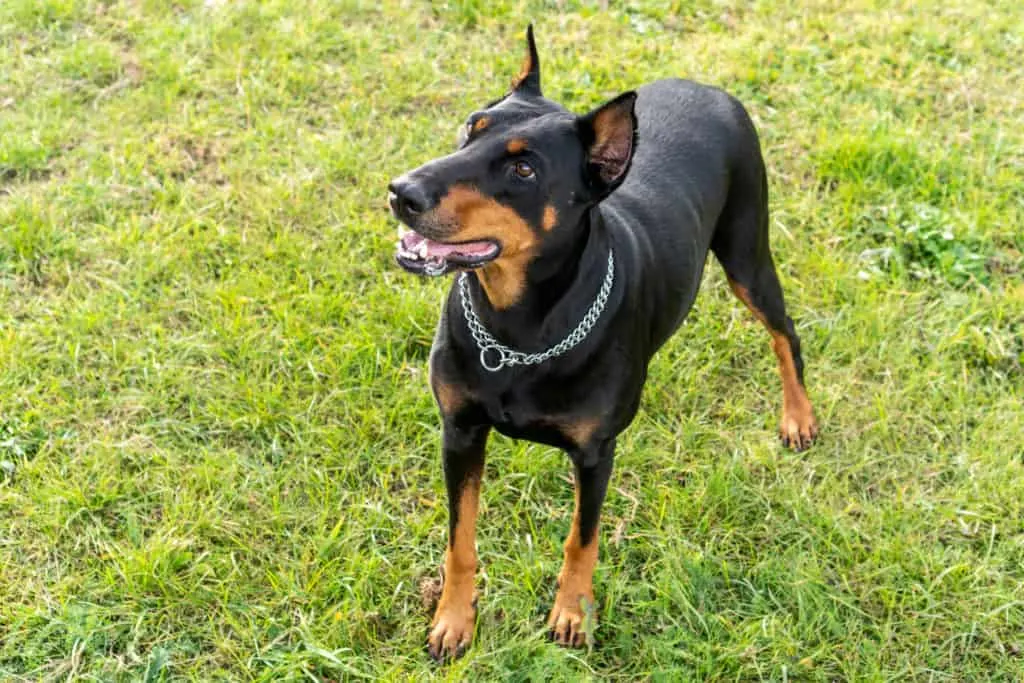
Though they look sleek and shiny, don’t let that fool you. Doberman Pinschers can weigh more than a German Shepherd and get a bit taller, too. Their smooth lines and graceful movements make them excellent guard dogs when a little stealth might be in order.
But they’re not always quiet; they’re fantastic alert dogs with a bark that can truly resonate when it needs to.
Aside from GSDs, you’ll often see Dobies in the spotlight on television shows or in movies when they need a guard dog. This is because the Doberman has a commanding presence and a rather flashy, impressive look.
Woe unto anyone who thinks this dog is all about looking tough though. Doberman Pinschers were bred to protect and guard.
Size
Dobermans can get pretty big, so be prepared to make space for them. Males can weigh in at an impressive 88 to 99 pounds, while females tip the scales around 71 to 77 pounds. The Doberman Pinscher isn’t afraid to use its weight to overpower an attacker, and they are fast enough to catch one trying to make a break for it. Because of this, it’s imperative that you teach your Dobie a release command to prevent serious harm
Indoor or Outdoor
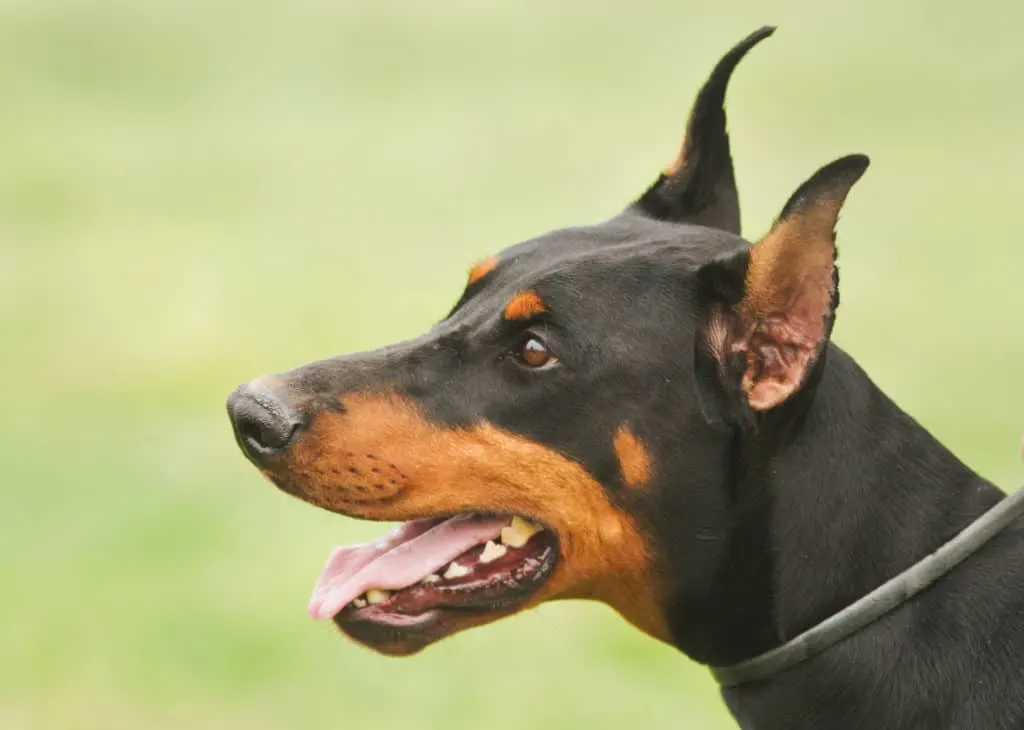
As a large breed, the Doberman Pinscher may seem unsuited for indoor life, but this simply isn’t true. In fact, despite their size, they are graceful dogs, always aware of their surroundings and how to navigate them with ease.
This doesn’t mean they won’t be able to handle an outdoor pratol. On the contrary, they love having room to roam and enough space to sprint after a bad guy.
Ideally, your Doberman would live inside with you and go to work each day patrolling the yard, house, or business. This would give them a deep sense of belonging and help maintain their natural loyalty toward you and your family.
Natural Attributes
As with GSDs, Doberman Pinschers have a natural tendency toward protecting their family and property. They are loving and sweet dogs, but they can switch gears to protector mode in an instant.
They are fiercely loyal, which makes it much harder for an intruder to win them over with treats or other tricks. At the same time, Dobies can be stubborn. While not a problem for a guard dog, their stubborn streak could make training a little tougher at first.
A Frightening Appearance
There’s a good reason movies and television like using Dobies for guard dogs in their productions. These dogs look like well-oiled and well-trained mobsters from a 1920s heist movie. That sleek fur and the flashy markings work to enhance the appearance of their muscular bodies and alert expressions.
Along with the challenging stance, seeing a Doberman heading toward you at breakneck speed would be enough to make you melt in fear. These dogs are fast, strong, and ready to tackle anything that threatens their people.
Akita as a Guard Dog
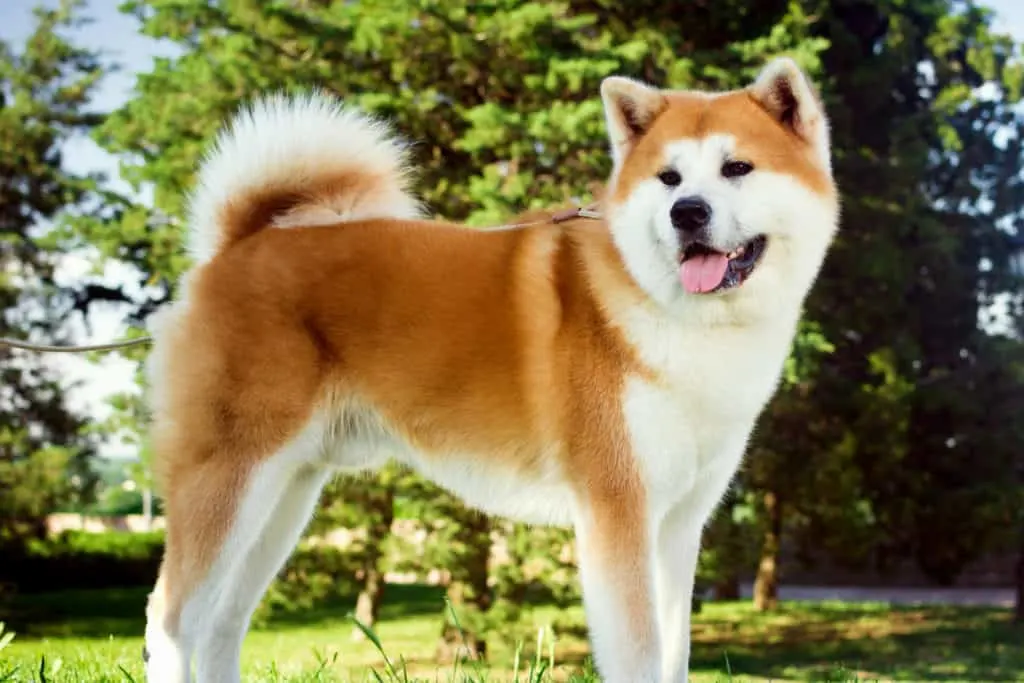
The Akita breed has a reputation for being standoffish and possibly even aggressive toward strangers. While the breed itself does have a tendency toward these traits, not all individuals will fall into these categories.
Still, it’s worth noting that being standoffish isn’t necessarily a bad thing in a guard dog. After all, your guard dog isn’t much use if he thinks everyone with a pocket full of treats is a new friend.
Akitas are known for their unwavering loyalty and their desire to keep their humans safe. This makes them a good choice for a guard dog, as long as you don’t plan on having lots of people over to your house or many visitors to your business.
They are naturally distrustful of strangers, which is great for a guard dog. But this can cause some problems if you allow an Akita free roam while friends or customers are nearby.
These dogs require little training to get them to protect you or your property. Instead, more training efforts should go toward teaching your Akita who is a bad guy and who is safe. It’s also wise to pay special attention to release commands and stop commands.
Size
Pictures of fluffy, sweet Akitas are all over the internet. Their soft fur and rounded faces often make them look like teddy bears that you’d want to hug and squeeze. The reality is that Akitas are quite large. In fact, male Akitas can be anywhere from 71 to 86 pounds, and females come in around 51 to 64 pounds. There’s lots of dense muscle packed under all that fluff, too.
Indoor or Outdoor
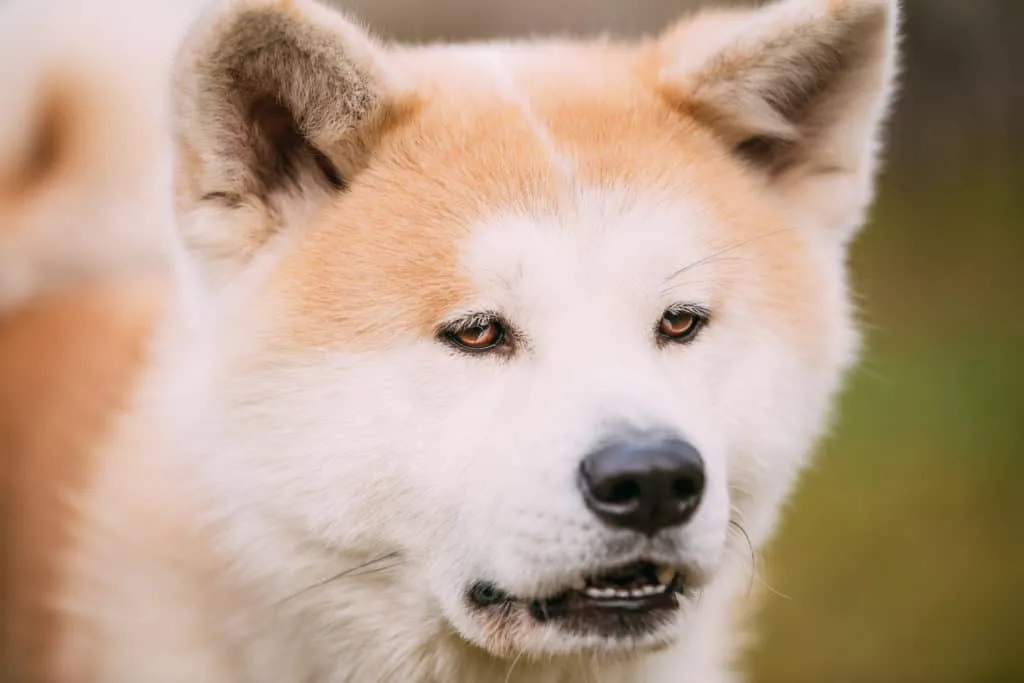
Akitas were originally a Japanese breed of dog bred specifically for protection. There are American Akitas, too, but they share many of the same traits.
Both types may be large, but they do quite well indoors. With all that fluffy fur, they are great for outdoors guarding, too. That’s actually what they were meant to do—keep watch outdoors, even in cold weather and over rough terrain.
Inside, they’re not as graceful as a Doberman or as careful as the German Shepherd, but they do have a respect for the family home. Outside, they have no fear when it comes to investigating every crevice or crack.
Natural Attributes
A fairly unique attribute for Akitas as guard dogs is their natural leaning toward stealth. They are more likely to quietly investigate a potential threat than come running up, barking and snapping.
This is not to say that an Akita won’t bark; it simply means Akitas are naturally inclined to check out a threat from a safe distance and decide the best course of action.
This breed is also naturally protective of family members. Some people refer to them as “nanny dogs”, stating they’re very protective of young children.
However, it is never wise to leave any dog unattended with small children, so we can’t recommend leaving your Akita in charge of your kids. For protecting the house where the children live, however, Akitas are a good option.
A Frightening Appearance
Despite the cute, fluffy pictures you’ll see online, in person, Akitas are a sight to behold. They are dominant, proud, and courageous in the face of even the toughest threats. These strong and defensive postures come across very well when an Akita feels their territory has been encroached upon.
Left to their own devices—in a wrecking yard, for example—they become incredibly territorial and will guard with ferocity. Because they have a natural distrust of strangers and a deep territorial instinct, it is crucial that Akitas be trained to know their boundaries and to understand release commands.
Cane Corso as a Guard Dog
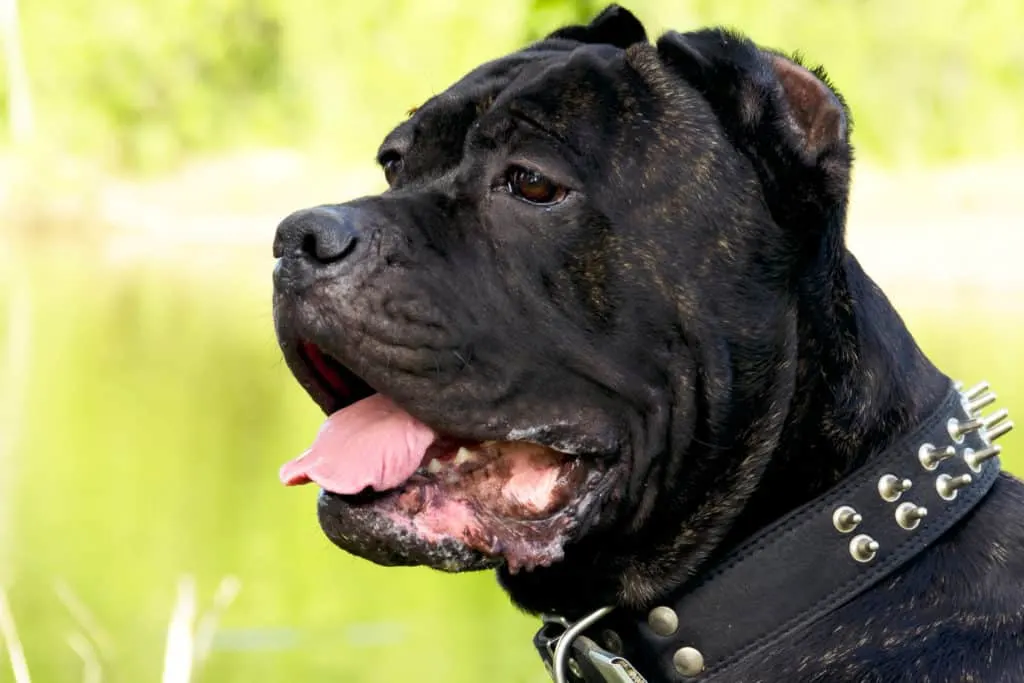
If you’d like a truly massive guard dog that can scare off an intruder with just a look, feast your eyes upon the Cane Corso. There is nothing small or meek about this breed, and their natural instincts to protect their families give them an unwavering focus that will leave bad guys quaking in their boots.
Cane Corsos are an Italian breed created for police work, tracking, and as a guard dog. Even so, they are known to be stable, calm, and easy to train. Loyal and loving, this breed of dog makes a good pet and guard dog combo.
Size
The most striking physical feature of the Cane Corso is its sheer size. Males come in at a whopping 99 to 110 pounds. Females are only a bit smaller between 88 and 99 pounds. No matter the gender, these are big, muscular dogs that look tough as nails.
Indoor or Outdoor
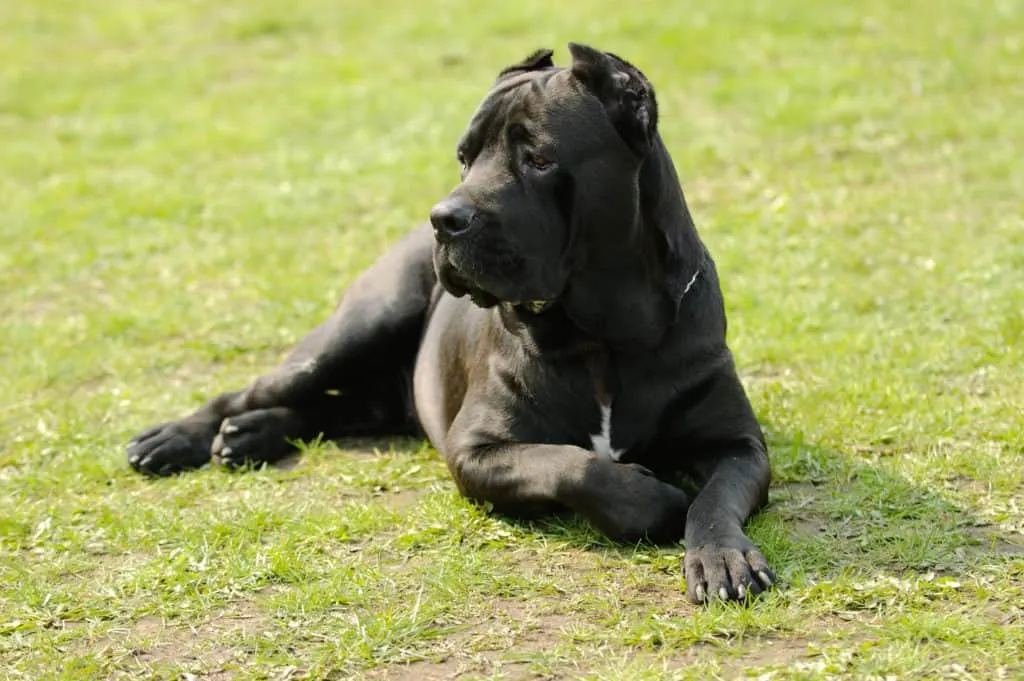
Considering these dogs can easily get over 100 pounds, it’s not unusual to see them patrolling outdoor areas. This doesn’t mean they can’t help keep watch over indoor areas though.
As long as you decorate your home and furnish it with this gentle giant in mind, they should be able to navigate just fine. However, if your Cane Corso has to scare off an intruder, their large size may make it tough for them to avoid knocking things over.
As a natural coursing dog, this breed is swift and strong. In the realm of guarding, that means it can chase trespassers without tiring easily or losing stamina.
Obviously, this is better suited to outdoor guarding, but just seeing this huge dog in a shop or house might be enough to keep a thief from even trying to break in.
Natural Attributes
As mentioned, this breed was created for coursing, or hunting animals by chasing and tracking by sight as opposed to smell. This gives the Cane Corso a distinct advantage over some other dog breeds who rely mainly on smell or hearing.
Add to their keen eyesight a body built for intense work, and you’ve got a powerhouse watching your back.
Another loyal dog, the Cane Corso feels at home with a belly rub and some cuddles, but won’t hesitate to set off after troublemakers. This faithful breed has a natural tendency toward guarding behaviors, but it isn’t aggressive toward strangers right off the bat.
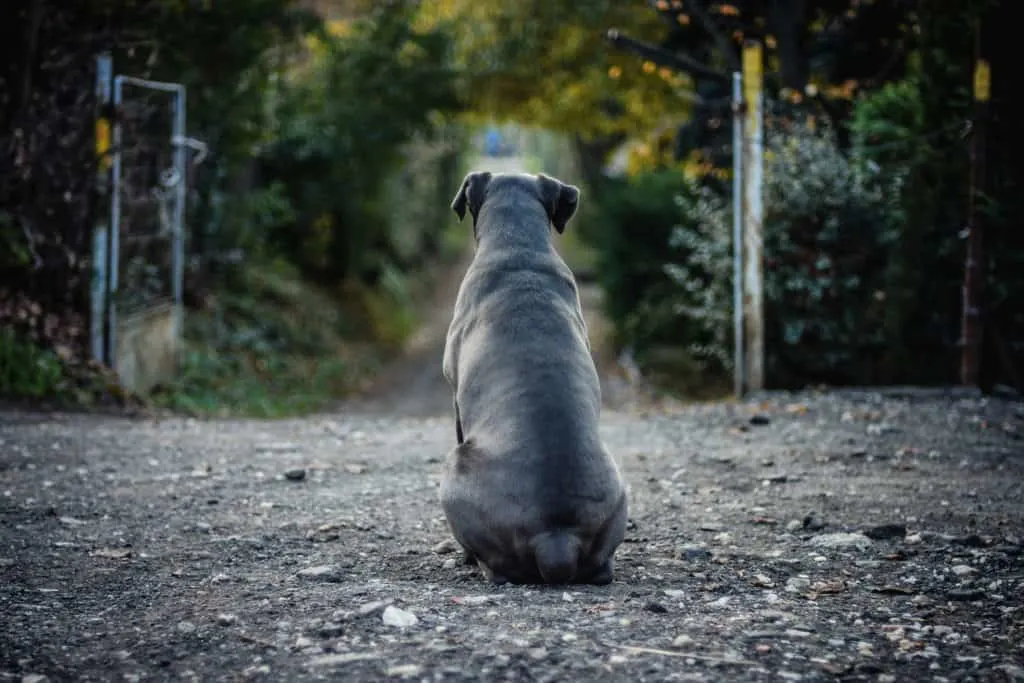
One of these dogs is more likely to stand and watch a stranger approach than immediately go on guard. However, once the person gets too close, the Cane Corso’s protective impulses will take over.
Pay special attention to training this breed to recognize boundaries, as they do like to run. You’ll also want to be sure your Cane Corso has a full understanding of obedience before you let them start guarding.
These dogs can be willful and pushy if not trained properly. As sight trackers, they won’t lose sight of their prey easily, meaning they will gladly follow a stranger around the property, keeping a close watch.
A Frightening Appearance
The size of this dog alone is enough to scare off most trespassers. With such a large, heavy body and obvious muscles rippling under a short, stiff coat, the Cane Corso is not to be trifled with. Aside from their size and weight, Can Corsos also have a boxy, tough-guy head with a strong jaw and piercing eyes.
This breed is alert and responsive, showing clear and obvious interest in anything that moves. Because of this, early socialization is imperative to teach this dog how to respond appropriately in all situations.
Tibetan Mastiff as a Guard Dog
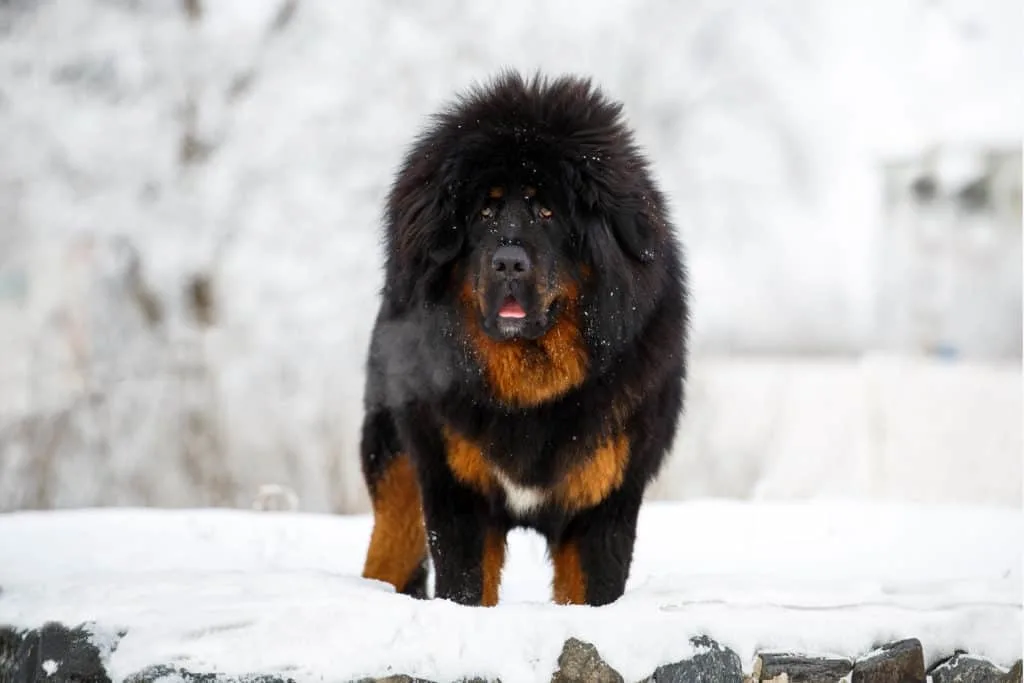
The last dog on our list is certainly not the least. The Tibetan Mastiff is a true giant, bred for the job of guarding and protecting. This intimidating, massive dog knows what his job is before you even tell him.
The Tibetan Mastiff was bred to help the nomadic people of Tibet, Mongolia, China, India, and Nepal survive their harsh environments. Their main job was to protect livestock and humans from predators such as wolves, bears, and tigers.
If this dog can take down a tiger, it can certainly take care of a puny human punk trying to steal your car.
These are not the most loving and cuddly dogs, but that’s perfect for many situations. They are loyal to their humans and will guard their property to the bitter end, but don’t expect a Tibetan Mastiff to crawl in your lap and lick your face.
Size
As the largest dog on our list of the top 5 dog breeds for guarding your stuff, the Tibetan Mastiff weighs in at an incredible 100 to 165 pounds for the males, and 74 to 120 pounds for females. These dogs weigh as much as a small man!
Indoor or Outdoor
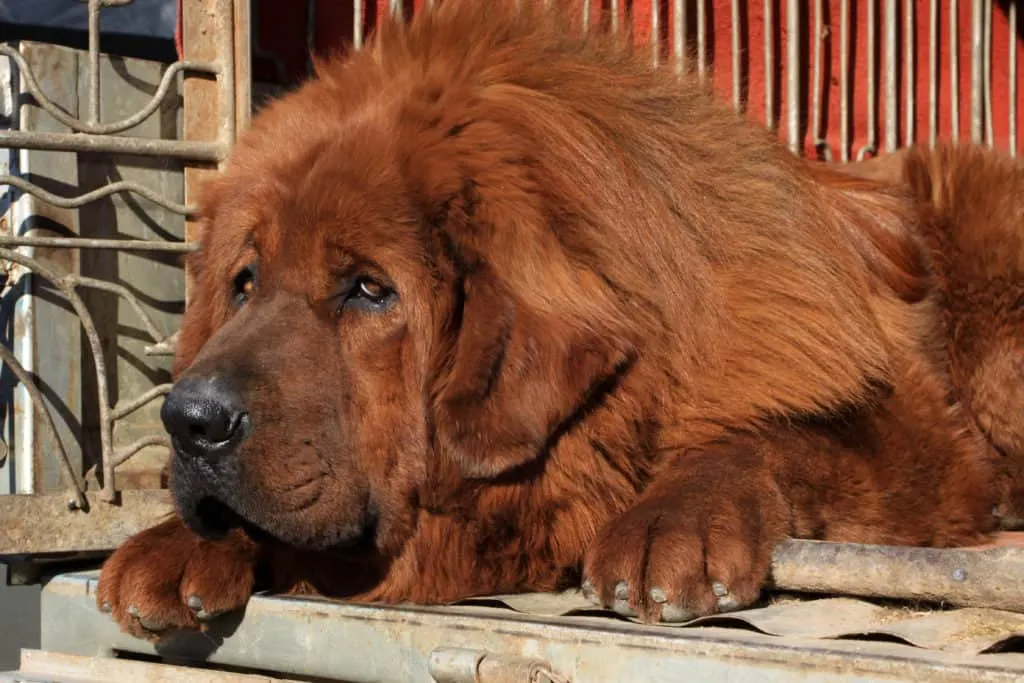
While you can certainly keep a Tibetan Mastiff in your house, it would take a bit of planning and careful furniture placement to be sure your stuff doesn’t get smashed.
These big fellas aren’t known for their grace, and with long, fluffy tails in the mix, your coffee table will always be clean—including knocking over your coffee cups.
These dogs do best outdoors for guard duty. This gives them the room they need to roam and patrol without worrying about your antique collection or next week’s bills ending up on the floor. Their double coat is long and can be coarse, giving an extra layer of protection outside.
Natural Attributes
As one of the more primitive breeds on this list, the Tibetan Mastiff is very in tune with its natural instincts. That includes an uncanny ability to detect intruders from an impressive distance. They have a strong patrolling, herding, and guarding drive that can be honed with intense training.
They do bark a considerable amount, which is great for alerting. However, as a nocturnal-leaning guard dog, leaving this big boy outside all night would surely annoy the neighbors. The Tibetan Mastiff can and will bark at every sound.
Intelligent and willful, this dog will need a strong base in obedience training. Due to their natural aloofness, socialization as a puppy is a must.
A Frightening Appearance
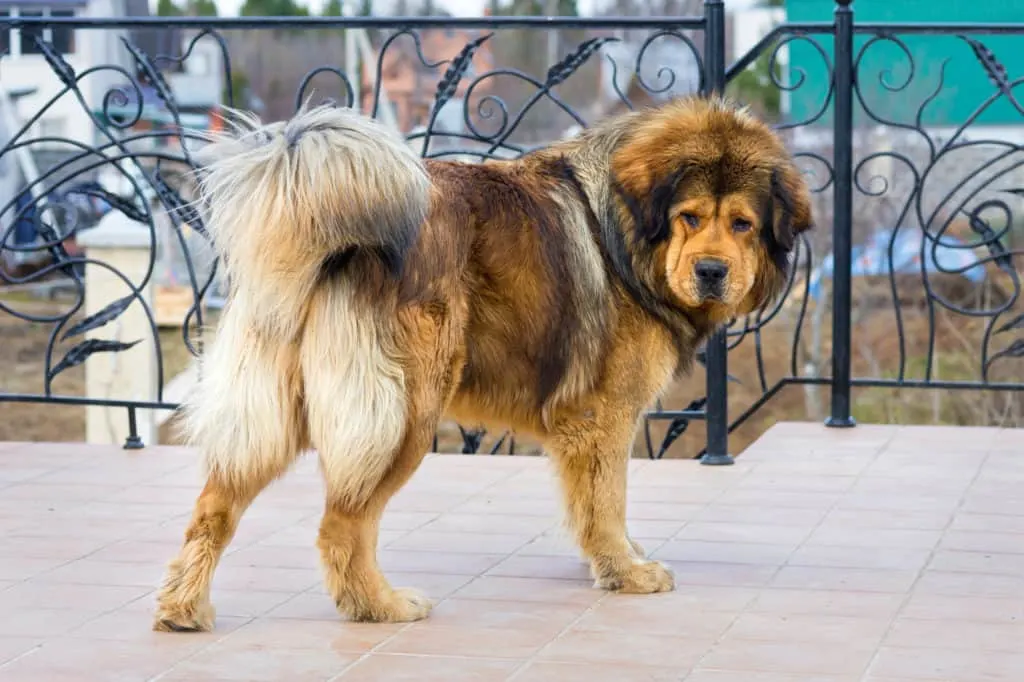
What this dog lacks in obvious rippling muscles it more than makes up for in size and shape. The wrinkled brow and keen eyes make this dog’s gaze nightmare-worthy.
They are relentless in pursuit of what they perceive as threats, and they have no qualms in sounding the alarm the second they sense danger.
Even without seeing this dog, the bark alone often sends predators and human bad guys scattering.
Final Thoughts
Choosing the right breed of dog to guard your house, family, or business is a big decision. Since each of these breeds lives 10 or more years, you’re investing in at least a decade of care and training.
Choosing the right guard dog for your situation will go a long way in ensuring whatever you’re guarding stays safe and protected under your dog’s watchful eye.
Don’t skimp on early socialization, basic training, and obedience work. Attention to these core details will pay off in the long run with a loyal, obedient, brave, and hard-working guard dog.
